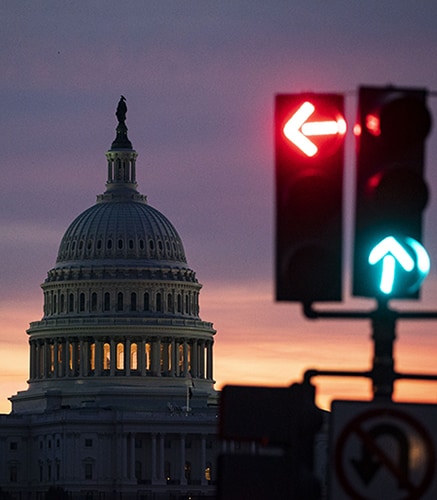Tax News You Can Use | For Professional Advisors
Jane Ditelberg, Director of Tax Planning
Sara Veith, Senior Wealth Advisor
October 6, 2025
Early investors (founders, angel investors and early adopters) often have the opportunity — if they are lucky — for growth in the value of their initial investment to far exceed their basis. That growth can be a double-edged sword if it results in significant tax obligations when the stock is eventually sold. However, if the stock meets the requirements to be classified as Qualified Small Business Stock (QSBS) under section 1202 of the Internal Revenue Code, all or a significant portion of the gain on such a sale can be excluded from income for federal tax purposes.1 Under the One Big Beautiful Bill Act (OBBBA), for QSBS issued after July 4, 2025, the aggregate gross asset limit for a company to be recognized as a Qualified Small Business increased from $50 million to $75 million (indexed for inflation beginning in 2027). In addition, the per‑taxpayer, per‑issuer flat exclusion cap increased from $10 million to $15 million (indexed for inflation beginning in 2027). QSBS issued on or before July 4, 2025, retains the prior $10 million flat cap. The alternative limit of 10x the taxpayer’s basis remains available in all cases. At current top federal long‑term capital gains plus net investment income tax (NIIT) rates, a $15 million exclusion avoids roughly $3.57 million of federal tax; a $10 million exclusion avoids about $2.38 million.
Comparison Of Stock Sale Pre- And Post-OBBA
Under OBBBA, the holding period requirements for QSBS have been expanded to a tiered system, providing greater flexibility and earlier access to capital gains exclusions. For QSBS issued after July 4, 2025, investors can now exclude 50% of capital gains after holding the stock for three years, 75% after four years, and 100% after five years. The following example illustrates a comparison of a founder selling founder’s shares of QSBS ($0 basis) issued at different times with no QSBS treatment, QSBS treatment under pre-OBBBA provisions and QSBS treatment under OBBBA provisions.
Tax Treatment Of $20 Million Gain On $0 Basis Stock Under Different Scenarios
| No QSBS | 5-Year Hold Issued 9/27/10 – 7/4/25 | 3-Year Hold Issued Post-7/4/25 | 4-Year Hold Issued Post-7/4/25 | 5-Year Hold Issued Post-7/4/25 | |
|---|---|---|---|---|---|
| Gain | $20,000,000 | $20,000,000 | $20,000,000 | $20,000,000 | $20,000,000 |
| Excluded | ($0) | ($10,000,000) | ($7,500,000) | ($11,250,000) | ($15,000,000) |
| Taxable Gain | $20,000,000 | $10,000,000 | $12,500,000 | $8,750,000 | $5,000,000 |
| Non-Section 1202 Gain (23.8%) | $20,000,000 ($5,760,000) | $10,000,000 ($2,380,000) | $5,000,000 ($1,190,000) | $5,000,000 ($1,190,000) | $5,000,000 ($1,190,000) |
| Section 1202 Gain (31.8%) | $0 | $0 | $7,500,000 ($2,385,000) | $3,750,000 ($1,192,000) | $0 |
| Total Taxes | ($4,760,000) | ($2,380,000) | ($3,575,000) | ($2,382,500) | ($1,190,000) |
| Net After Taxes | $15,240,000 | $17,620,000 | $16,425,000 | $17,617,500 | $18,810,000 |
As the table illustrates, the reduced holding periods and increased aggregate gross asset limit for post-OBBBA QSBS creates more flexibility, allowing for stockholders to plan for liquidity events earlier. Ultimately this makes investments in small businesses more attractive, especially to private equity firms. However, the rules surrounding QSBS gain exclusion are complex, and there are many traps for the unwary.
Tax Incentives For QSBS Ownership
Congress enacted section 1202 in 1993 to provide an incentive for investors to buy stock in small business ventures, which traditionally have had more challenges attracting capital than larger enterprises. In the ensuing 30 years, additional changes to the statute have only enhanced the tax benefits of QSBS investments. Today, for QSBS issued after July 4, 2025, the per‑taxpayer exclusion cap is the greater of (a) $15 million for QSBS (with inflation indexing beginning in 2027) or (b) ten times the investor’s basis. For QSBS issued on or before July 4, 2025, and after September 27, 2010, the prior $10 million flat cap applies.2 QSBS treatment is not limited to shareholders who are individuals — any taxpayer other than a C corporation is eligible to claim the benefit of the exclusion of gain from the sale of QSBS.
Qualifying For QSBS Treatment
As with many favorable tax provisions, the devil is in the details. Qualifying for QSBS treatment requires careful attention to a range of applicable factors. There are three points in time to evaluate an investment's qualification as QSBS:
The first of these is at the time the investment is made. When the investor acquires the stock:
- The corporation must be a domestic C corporation for income tax purposes, although an S corporation, LLC or partnership can convert to a C corporation for this purpose.
- The taxpayer must acquire the QSBS directly from the issuer for cash or in exchange for services (other than as an underwriter). Stock acquired from third parties or in exchange for other stock does not qualify.
- For QSBS issued after July 4, 2025, the issuer’s aggregate gross asset limit is $75 million (tested at all times after 1993 and immediately after issuance), with inflation indexing beginning in 2027. For QSBS issued on or before July 4, 2025, the $50 million threshold continues to apply. The company must qualify as a qualified small business, with gross assets of less than the applicable threshold amount, at all times after 1993, up until the acquisition by the shareholder of the QSBS and immediately after that transaction.3
- The company must be engaged in specific, permitted business activities. Most services, including investments, law, athletics, accounting and medicine, as well as other businesses such as hotels, restaurants, farms and financial services companies are excluded from the definition of "qualified business." The company must use at least 80% of its assets in an active trade or business.
It is vital to evaluate these issues before the initial investment is made. While not every small business investment will generate gains allowing QSBS treatment, QSBS treatment will not be available for any investment that does not satisfy the initial requirements. This makes QSBS factors important not just to those selling small business stock but also to those structuring venture capital and private equity deals, companies using equity compensation plans and entrepreneurs establishing new businesses.
The second significant point in time for analysis is at the time of a permitted transfer. Permitted transfers include:
- Distributions from a partnership.
- Rollover of proceeds from one QSBS company to another issuer that qualifies as a QSBS.
- Certain permitted reorganizations of the issuing corporation.
- Conversion of other QSBS stock held by the taxpayer in the same company (e.g., a stock dividend).
If QSBS is acquired in a permitted transfer, the holding period of the original owner carries over to the new shareholder and the stock is treated as having been acquired in the manner the transferor acquired it. It should be noted that OBBBA integrates section 1223 holding‑period tacking for defining acquisition date and the applicable regime. Exchanging or rolling pre‑OBBBA QSBS does not convert it into post‑OBBBA QSBS for purposes of the new tiered schedule or the $15 million cap; the original issue regime still governs.
The final time to analyze the stock's eligibility is at the time the shares are sold:
- For QSBS issued after July 4, 2025, the shareholder must have held the stock for at least three years prior to the sale to be eligible for the partial or full exclusion. For those investors who qualify for a partial exclusion, the non-excluded portion of the gain up to the cap will be taxed at a 28% rate plus 3.8% NIIT, and any portion of the gain above the cap will be taxed at a 20% rate plus 3.8% NIIT.
- For QSBS issued on or before July 4, 2025, the shareholder must have held the stock for at least five years prior to sale.
- For stock acquired in exchange for services, the period begins when the employee is taxed on the income.
- For stock acquired by exercise of options, conversion of stock or exercise of warrants, the period begins at the original issue.
- For QSBS acquired in a permitted transfer, the period begins when the donor acquired the stock from the company (that is, the holding periods are tacked together).
- The aggregate gross asset limit ($10 million or $15 million) applies as a lifetime cap, so if a shareholder that owns QSBS issued after July 4, 2025 sells $7,500,000 in shares in year one and another $7,500,000 in shares in year two, QSBS treatment is allowed for both sales.
- The rules apply per issuer of stock, so taxpayers who invest in multiple small businesses could take the QSBS exclusion from gain on multiple occasions.
- For a married couple filing jointly, the sale is treated as half by each of them, regardless of who owned the stock originally.
QSBS Tax Planning Opportunities
Although the QSBS rules are complex, they do present opportunities for tax planning. For example, if a taxpayer has more than $10 million of gain in QSBS issued before July 4, 2025, she can make a gift of some of the stock to another taxpayer (such as an individual or non grantor trust). Both the donor and the donee will be treated as having QSBS, and each can use section 1202 to exclude up to $10 million in gain.
Similarly, if a taxpayer does not want to recognize gain at the time they sell their QSBS investment, they can roll over the proceeds into a newly permitted QSBS investment and defer recognition of the gain until they sell the shares in the new entity. Since the caps are "per issuer" of stock, serial entrepreneurs and other investors may have multiple opportunities to use the $10 million exclusion. For more insights on QSBS, consult a Northern Trust advisor.



